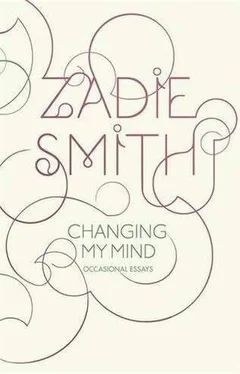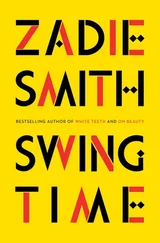September 18, 2005, marks the centenary of the birth of Greta Garbo, an icon both resonant and remote to us. It feels a perilous centenary. In twenty years’ time, no one will need to make an argument for the centenary of Marilyn Monroe, with her hourglass silhouette, her voluptuous blondness. It is different with Garbo: you have to make a case for Garbo. She resonates because hers was ultimately a career of photographs, and this we recognize. She is remote because the great photographs of Garbo are abstractions; they are not of a woman, they are of a face. Garbo’s body was an irrelevance. From our twenty-first-century icons we demand bodies: bodies are to be admired, coveted and-if one works hard enough-gained. You can have something resembling Madonna’s body, if you try. But you cannot have Garbo’s face. It was hers alone, a gift she used for as long as she could make it signify and then, aged only thirty-six, withdrew from public view, keeping it hidden until she died.
This face was memorably described by the philosopher Roland Barthes, who identified it as a transition between two semiological epochs, two ways of seeing women. Garbo marked the passage from awe to charm, from concept to substance: “The face of Garbo is an idea, that of [Audrey] Hepburn an event.” There was something essential, Platonic and unindividuated in Greta’s face. She was Woman, as opposed to Audrey, who was a woman, whom we loved precisely because her beauty was so quirky, so particular. Garbo has no quirks at all. A close-up of her face appears to reveal fewer features than the rest of us have-such an expanse of white-punctuated by the minimum of detail, just enough to let you know that this is flesh, not spirit. Her vulnerable, changeable face is what comes prior to the emphatic mask of a beautiful woman-she is the ideal of beauty that those masks attempt to capture. Post-Garbo, we have taken what resonated in Garbo’s fluid sexuality and mystery and hardened it, made it a commodity. Take Garbo’s heavy, deep-set eyelids: these have become the mark of the diva, passing down through Marlene, to Marilyn and, more recently, to Madonna, in whom they have become ironic. Hers is the ultimate modern Garbo face, attached to a worked-out body, and also to the idea of female ambition, will and talent. The idea of Garbo is somehow more elevated than that-it doesn’t even condescend itself to the pursuit and fulfillment of talent. It merely is. Garbo was not an actress in the way Bette Davis was an actress. Garbo was a presence. In fact, is it okay to say, a hundred years on, that Garbo was not a very good actress? That some of her best work was still and silent? It could be said that her best director was, in fact, a still photographer, MGM’s famous Clarence Bull. He did not try to know her or “uncover” her, as her movie directors sometimes did, giving her those awkward, wordy speeches that revealed less than one raised eyebrow could manage. Bull understood the attraction of her self-containment. Years later he recalled that where other photographers had tried to penetrate the mystery, “I accepted it for what it was-nature’s work of art… She was the face and I was the camera. We each tried to get the best out of our equipment.”
Garbo’s equipment was not always so sublime. She grew up Greta Gustafs son, a lanky, overweight, big-footed girl from Sweden. Despite Hollywood’s later intimations of an aristocratic lineage, she was poor, sharing a four-room, cold-water flat with her family in a Stockholm tenement. When her gardener father died of kidney failure, fourteen-year-old Greta dropped out of school and began work in the millinery department at the Paul Bergstrom department store. She wanted to be an actress, always. Discovered by her manager modeling hats in the mirror, she was asked to appear in a commercial film to promote millinery, How Not to Dress . This led to other commercial shorts. In her capacity as shopgirl, she would look out for famous Swedish actresses in the store and make sure she waited on them.
It was through a connection she made here that she secured an audition for the state-sponsored Dramatic Theatre Academy, where she was accepted at age seventeen. There she met director Mauritz Stiller, the first of many Garbo mentors. He changed her name and told her to lose twenty pounds. He cast her in The Saga of Gosta Berling (1924), which was a success in Sweden and Germany and brought Stiller to the attention of Louis B. Mayer at MGM. They met in Germany. Mayer’s original interest was Stiller, who had directed more than forty-five films, but he saw something in Garbo. He invited them both to America, although not before a word in Stiller’s ear: “In America, we don’t like fat women.” Garbo went on a diet of spinach for three weeks, was terribly sick, lost the weight and replaced it with no muscle. She stayed that way-slender, shapeless, suggestive of a dangerous lack of physical vitality-throughout her movie career. With her newly revealed cheekbones and wispy frame, she embarked upon her first photo shoots in New York. Any other hopeful starlet would have posed for cheesecake shots, swimsuits, “come hither” glances-the whole Hollywood routine. Garbo’s shots, lit with the “Rembrandt lighting” that would make her famous, are sculptural portraits, more Rodin than raunch. The Garbo image is yet unformed, but the beginnings of an iconic persona are here. She had a relationship with light like no other actress; wherever you directed it on her face, it created luminosity. She needed no soft or diffuse lighting to disguise defects. There were no defects. And then there is that sense of European ennui, of weltschmerz, that no MGM player had projected before. They had vamps, they had sex bombs, but they’d never had existential depression. “In America you are all so happy,” she told a reporter. “Why are you all so happy all the time? I am not always happy. Sometimes yes, sometimes no. When I am angry, I am very bad. I shut my door and do not speak.”
Once she reached Hollywood, the fan magazines responded enthusiastically, not as much to the fiery sexuality she was asked to play in those early silents, but to the sadness that seemed to lie behind it. A typical headline: “What is wrong with Greta Garbo?” Whatever it was, she was unable to articulate it. She refused all interviews, and her few private letters are banal-she often complained about the vulgarity of American film but had few ideas of her own to bring to the table. To the director of Queen Christina (the story of the abdication of the Swedish queen, a pet project that Garbo was very anxious about), she could only offer the suggestion that there should be a scene with trousers. She put herself in others’ hands. First Stiller, then the actor John Gilbert, the lesbian clique of Mercedes de Acosta, and the producer Irving Thalberg. Louis B. Mayer was driven mad by all these advisers and intercessors; he thought she was too easily influenced. And yet what comes across on film is a resolute, inviolable selfhood, ultimately impenetrable by other people. The public felt it, and expressed it in their popular nicknames: “The Swedish Sphinx” and “The Divine.”
Flesh and the Devil (1926) was her smash hit, creating a Garbo model that the studio exploited for the next fifteen years. It is silent and possibly her best film. She was only twenty-one, but her world-weariness on-screen suggests an older woman, longed for and chased after by the puppyish John Gilbert, who was to become her real-life lover. This romance, as it was rendered on-screen, scandalized America: a young man lying underneath a more experienced woman who seemed to literally feed from his mouth as she kissed him. It was a ravishment-female moviegoers loved it. This was a new kind of woman. For this reason she was punished in the movies (in Flesh and the Devil she drowns in ice water; in Camille it’s tuberculosis; in Anna Karenina it’s that pesky train), but she was free in life. It was Gilbert who suffered when she refused to marry him; it was Mayer who went crazy when she went on strike rather than make a corny movie ( Women Love Diamonds ) that she didn’t like the look of.
Читать дальше








![Джон Харгрейв - Mind Hacking [How to Change Your Mind for Good in 21 Days]](/books/404192/dzhon-hargrejv-mind-hacking-how-to-change-your-min-thumb.webp)



